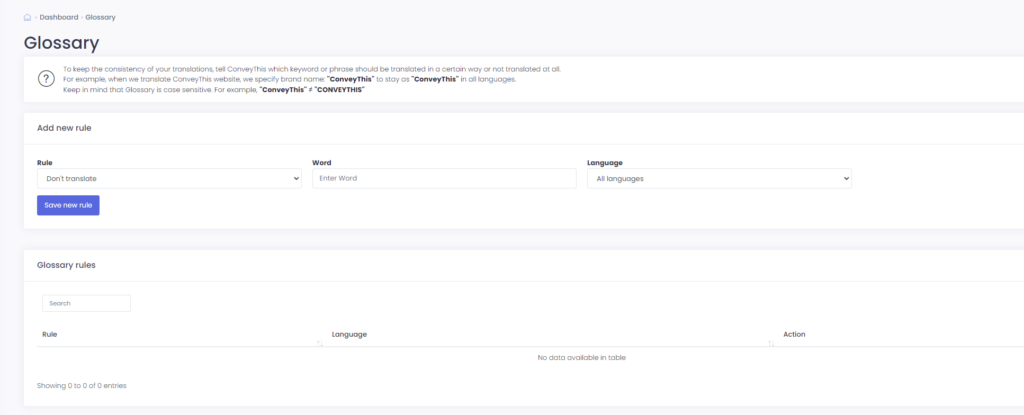Vyloučit stránky a prvky Div z překladu pomocí ConveyThis
1. Vyloučené stránky
A. Vylučte adresy URL pomocí pravidel vyloučení
Chcete-li stránku vyloučit, navštivte stránku Vyloučené stránky

Poté přidejte relativní adresu URL stránky, kterou chcete vyloučit.
Zde můžete vyloučit stránky z překladu. Použijte prosím následující role:
Začátek – Vyloučí všechny stránky začínající na
Konec – Vyloučí všechny stránky, které se týkají
Obsahuje – Vyloučí všechny stránky, kde adresa URL obsahuje
Stejné – Vyloučí jednu stránku, kde je adresa URL úplně stejná
* Mějte prosím na paměti, že musíte použít relativní adresy URL. Například pro stránku https://example.com/blog/ použijte /blog
2. Vyloučit bloky
Pokud chcete vyloučit konkrétní část svého webu, jako je například záhlaví, přejděte na stránku Vyloučené ID DIV.
3. Glosář
Pravidla překladu nebrání překladu materiálu; jednoduše stanoví, že určitá slova musí být na vašem webu vykreslena určitým způsobem.
Abyste zachovali konzistenci svých překladů, řekněte ConveyThis, které klíčové slovo nebo slovní spojení by se mělo překládat určitým způsobem nebo nemělo být přeloženo vůbec.
Když například překládáme ConveyThis web, určíme název značky: „ConveyThis“, aby ve všech jazycích zůstal jako „ConveyThis“.
Pamatujte, že ve slovníku se rozlišují velká a malá písmena . Například „ConveyThis“ ≠ „CONVEYTHIS“
